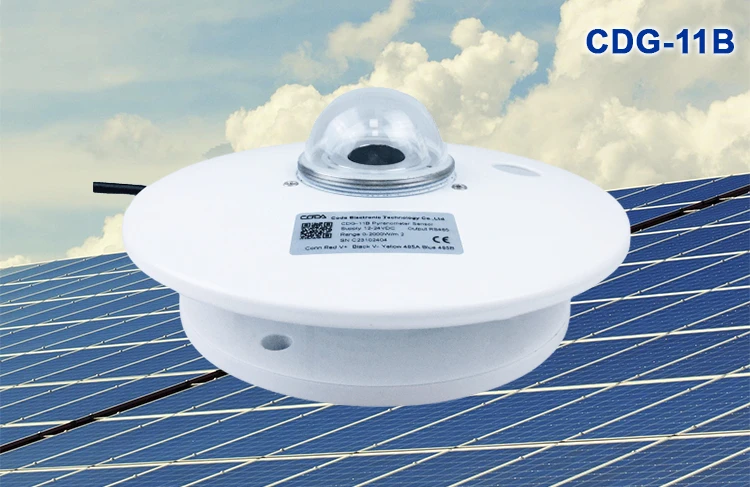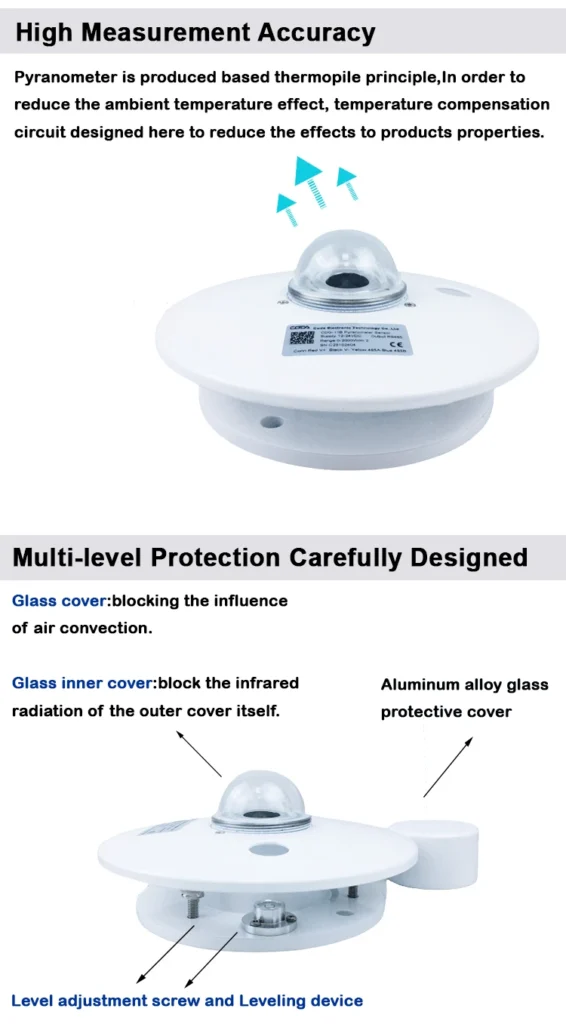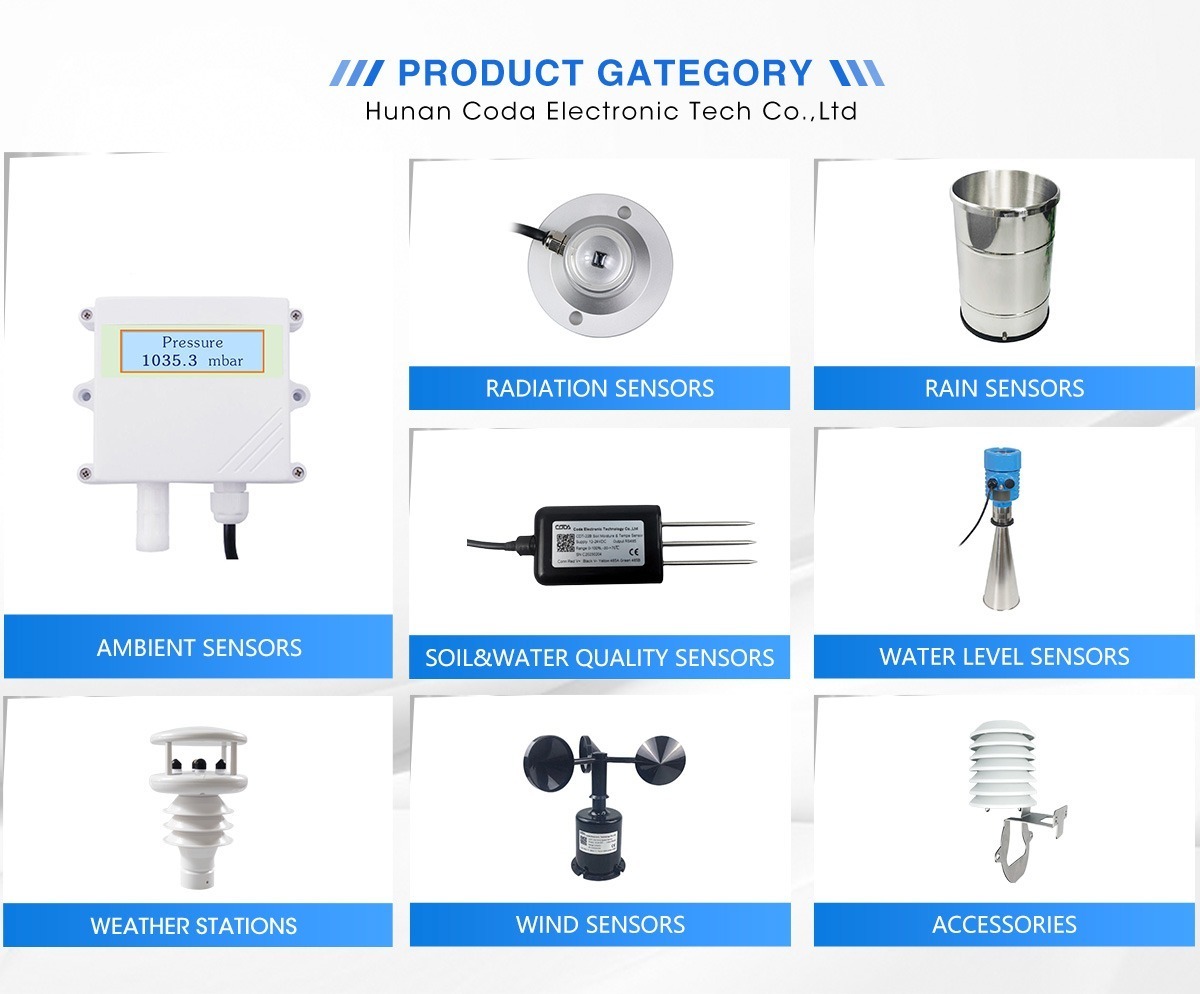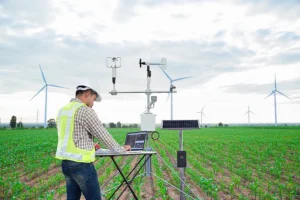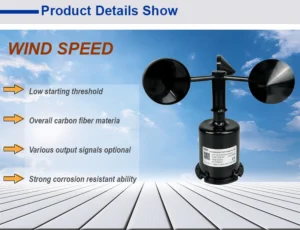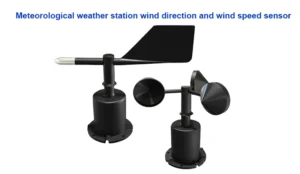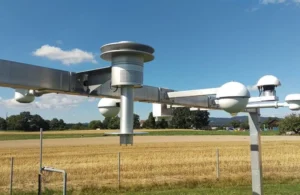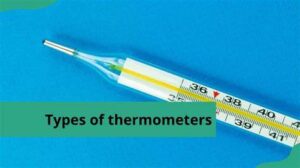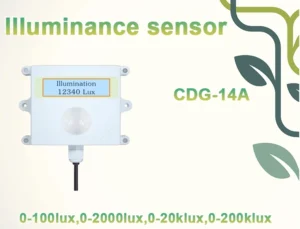What different a pyranometer from an irradiance meter?
The pyranometer and the irradiance meter both measure solar radiation. However, they use different methods and have different purposes.
A pyranometer is a tool that measures total solar radiation on a surface. This includes direct sunlight and scattered light. Meteorologists mainly use it for weather prediction, climate observation, and solar energy studies.
Manufacturers carefully adjust pyranometers to give accurate readings of solar radiation. They often include temperature sensors and other features to lessen environmental effects.
An irradiance meter is a tool that measures how strong solar radiation is. You can use it in one spot or on a surface. It shows the solar energy hitting a specific area, usually in watts per square meter (W/m²).
Researchers often use these meters in solar energy studies. They help design and check how well solar systems work. They also measure the power output of solar cells and panels.
Measurement principle
Pyranometer:
The main part of a pyranometer is a round glass case. Inside, it has a thermopile or a photoelectric element. This device turns solar radiation into an electrical signal.
When sunlight hits the pyranometer’s receiver, it absorbs solar energy. Then, it turns that energy into heat.
This heat creates a temperature difference in the thermopile. This difference generates an electrical signal that matches the amount of solar radiation received.
Irradiance meter:
The irradiance meter measures how strong solar radiation is at a certain point or surface. It often uses a photovoltaic sensor or a thermopile sensor.
The photovoltaic sensor makes an electrical signal when it sees light. The strength of this signal depends on how bright the light is. The thermopile irradiance meter measures radiation intensity by changing heat from absorbed radiation into an electrical signal.
Application scenarios
Pyranometer:
It is mainly used for weather forecasting, climate monitoring, and solar energy research. It measures the total solar radiation on a surface.
This includes both direct sunlight and scattered light. This helps scientists learn about climate changes and environmental effects. It also shows how air pollution affects solar radiation.
Irradiance meter:
It is often used in solar energy research and projects. This includes making solar panels and testing how well they work.
It measures the solar energy that hits a certain area. This is usually shown in watts per square meter (W/m²). This helps us see how much power solar cells or panels produce.
Structural characteristics
Pyranometer:
The structure usually has a round dome shape. This dome can collect sunlight from all sides. It is often made of good quality glass.
This helps cut down on diffusion and pollution. It also improves the cosine response.
Irradiance meter:
Irradiance meters do not have a fixed design. Some have a flat plate shape. Others include collimators or other devices. These features help direct incoming light. They also make measurements more accurate.
summary
A pyranometer measures all the solar radiation that hits a surface. An irradiance meter checks the strength of solar radiation at a specific spot. Researchers often use it in solar energy studies and projects.
